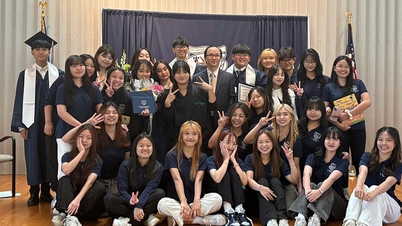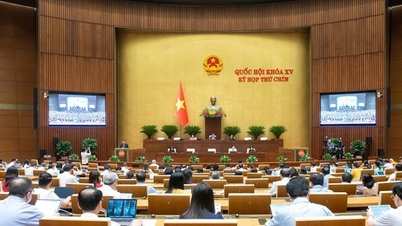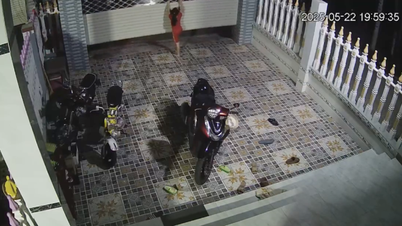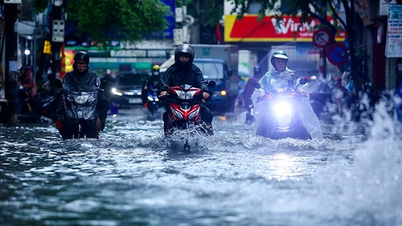The teacher also blushed.
Students wearing short skirts, revealing shirts, or see-through, off-the-shoulder outfits are no longer a strange sight at many universities. This reality has recently forced a series of universities to "take strong action" in issuing regulations to rectify the situation of "skimpy" clothing when coming to the lecture hall.
However, this set of regulations has also received mixed opinions from students. Besides those who agree with the tightening of discipline, some students feel "suffocated" and think that the new regulations are too strict, no different from high school.
Sharing about the "half-laughing, half-crying" situation, a lecturer at a public university in District 3 frankly said: "To be honest, there were many times when I felt embarrassed and blushed because of the somewhat "lack of fabric" of female students' clothing such as short skirts, low-cut shirts... During that entire lesson, I saw the male students constantly looking at that female student and laughing. I didn't dare look in that direction either."

There is a phenomenon of students wearing short shirts and skirts when going to school (Photo: AI).
From that, this lecturer believes that the pedagogical environment needs a certain seriousness and solemnity.
MSc. Vo Thanh Du, lecturer at Ho Chi Minh City Open University, expressed his opinion: "Students' dress is a personal freedom, but that freedom needs to be within a framework. Clothing such as tank tops, skirts that are too short, revealing, thin clothes... are clearly not suitable for theeducational environment."
Mr. Du said that the dress code is necessary to educate students about discipline and neatness when coming to school.
"Although it doesn't have to be as restrictive as high school, there must be limits. It can't be a situation where people can wear whatever they want," he emphasized.
This lecturer also shared his own experience: "I once gently asked a few students to change into more appropriate clothing during the first class. Fortunately, after that, they were all aware and always appeared with a decent, neat appearance."
For male students, Mr. Du said they should be encouraged to dress politely, wear collared shirts and tuck their shirts into their pants.
"This gradually forms a professional lifestyle and style for them. Look at the male gods in movies, they always appear with a polished appearance," he cited.
However, Master Vo Thanh Du also noted that it should not be imposed rigidly. "Sometimes, if we show children the beauty of politeness, they will voluntarily follow," he said.
However, the lecturer also affirmed that for some specific fields such as medicine or pedagogy, having strict regulations on clothing to ensure standards is mandatory.
"In general, there still need to be certain regulations in the educational environment. There are students who dress without knowing if they feel embarrassed, but those who see them feel embarrassed," Mr. Du frankly expressed.
Respect individuality but be polite
Sharing the same opinion, teacher Nguyen Thuyen, teacher at Nguyen Hue High School, Thai Binh , emphasized that students and teachers should dress appropriately when coming to school.
"Of course, it's not as strict as high school students, but thin, tight shirts, skirts that are too short, shorts, or low-cut shirts are all inappropriate. They have a negative impact on the educational and learning environment," Ms. Thuyen said.

The image of a group of female students wearing inappropriate clothing once caused controversy on social networks (Photo: MXH).
She also analyzed the psychological factors when students are at an age when their psychology and physiology are developing very strongly. Dressing too sexy can attract unnecessary attention and somewhat affect the psychology of other students.
To effectively address this issue, teachers say universities need to take a soft and sensible approach. One suggestion is to have a dress code that is tailored to the occasion, such as formal wear for classes and more casual attire for extracurricular activities.
In addition, schools need to clearly explain the purpose of the regulations, emphasizing the building of a civilized and polite school environment instead of a rigid regulation board. The form of handling violations also needs to be appropriate, prioritizing reminders and requests to change clothes instead of harsh disciplinary measures such as point deductions or discipline.
On the students’ side, teachers also expect respect for school regulations, understanding that these regulations are made for the common goal. At the same time, students are also encouraged to express their individuality through choosing polite yet personal clothing.
Actively contributing constructive opinions in dialogues with schools also needs to be enhanced to find common ground and the most appropriate regulations.
Source: https://dantri.com.vn/giao-duc/nam-giang-vien-tre-do-mat-vi-sinh-vien-nu-mac-cung-nhu-khong-20250506221854308.htm




![[Photo] Prime Minister Pham Minh Chinh receives a bipartisan delegation of US House of Representatives](https://vphoto.vietnam.vn/thumb/1200x675/vietnam/resource/IMAGE/2025/5/28/468e61546b664d3f98dc75f6a3c2c880)
![[Photo] 12th grade students say goodbye at the closing ceremony, preparing to embark on a new journey](https://vphoto.vietnam.vn/thumb/1200x675/vietnam/resource/IMAGE/2025/5/28/42ac3d300d214e7b8db4a03feeed3f6a)

![[Photo] Vietnamese and Hungarian leaders attend the opening of the exhibition by photographer Bozoky Dezso](https://vphoto.vietnam.vn/thumb/1200x675/vietnam/resource/IMAGE/2025/5/28/b478be84f13042aebc74e077c4756e4b)





















































































Comment (0)